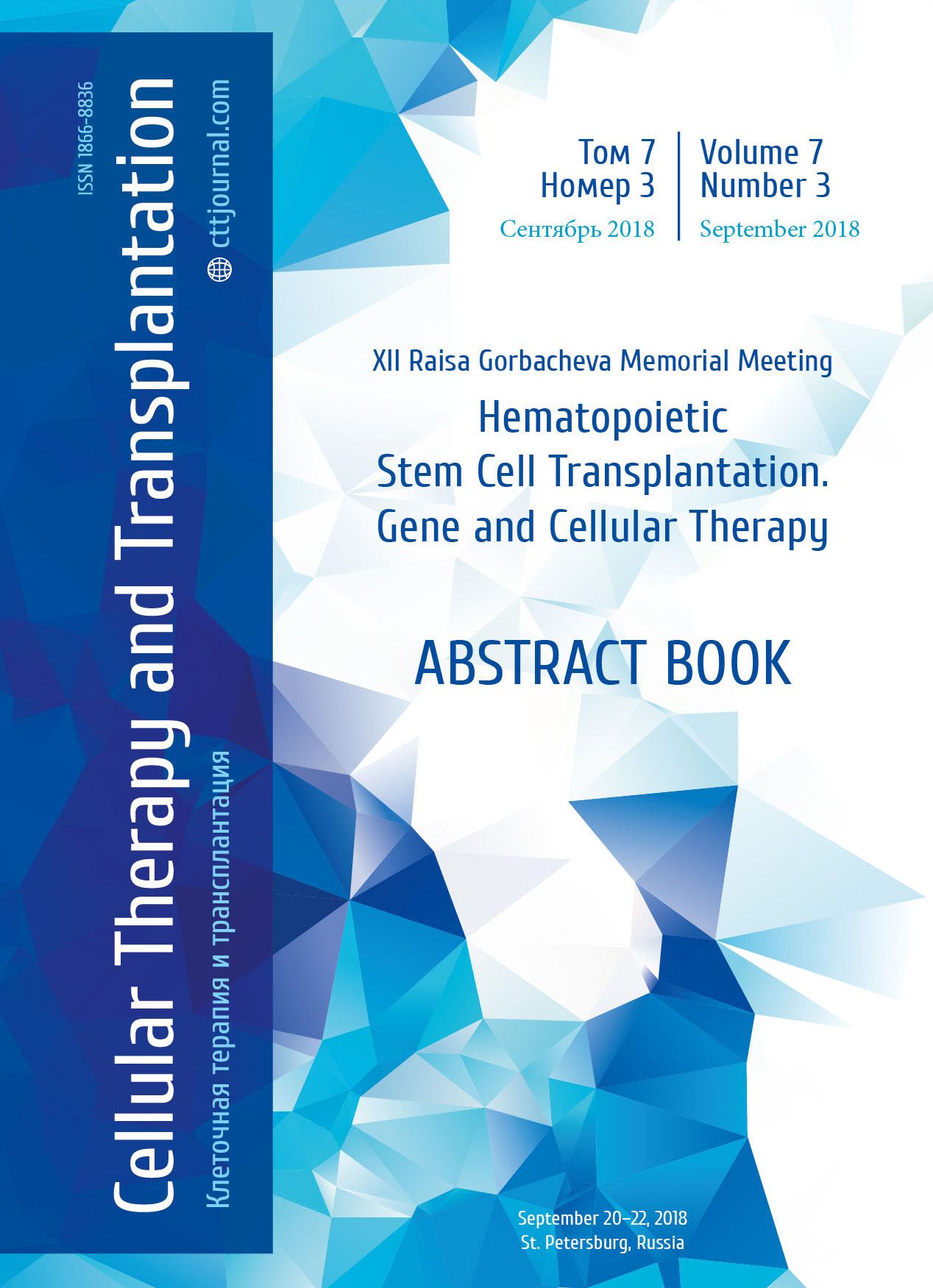Case report of effective fecal microbiota transplantation to alleviate acute intestinal graft-versus-host disease
2 Research Scientific Institute of Children’s Infections, St. Petersburg, Russian Federation
3 The Explana Research Laboratory, St. Petersburg, Russian Federation
Summary
In allogeneic hematopoietic stem cell transplantation (HSCT), the recipients have altered composition of gastrointestinal (GI) microbiota, due to the use of cytostatic and antibacterial drugs, changes in diet. There is a growing evidence that microbiota influences the immune system, suppresses pathogenic bacteria, promotes regeneration of the GI mucosa. It may prevent immune and infectious complications after HSCT. Transplantation of fecal microbiota (FMT) is directed to recovery of recipient microflora. Our aim was to present a clinical case of a patient with steroid-resistant intestinal graft-versus-host disease (GVHD), stage 4, grade 3, therefore treated by FMT.
Case description
A forty-five year old patient underwent HSCT in Sep 2017, for secondary acute myeloid leukemia (AML) evolving from myelodysplastic syndrome. Hematopoietic graft was from unrelated donor, conditioning regimen included fludarabin+ busulphan (12 mg/kg). Prevention of GVHD was performed with thymoglobulin, tacrolimus, MMF. Since D+67, tacrolimus was tapered and stopped at D+82 due to high relapse risk. From D+102, persistent diarrhea syndrome developed, with up to 3 L/d. The patient was admitted to the R. M. Gorbacheva Memorial Institute of Hematology, Oncology and Transplantation. The diarrhea volume reached 5 L/d, and the patient has became septic (fever of 38oC, serum CRP, 331mg/L). Empirical antibiotic therapy consisted of doripenem, vancomycin. Colon biopsy (D+114) identified histological grade 2 of GVHD and multiple viral infection (PCR-positive for HHV-6, CMV, EBV). Tacrolimus was restarted, methylprednisolone at 2 mg/kg, and ganciclovir 10 mg/kg were administered. After 7 days of therapy, the diarrhea volume was 13 L/d. After failure of the first-line treatment, ruxolitimib (20 mg/d) was administered. Due to acute kidney injury, tacrolimus was replaced by sirolimus. At D+133, the diarrhea decreased to 3 L/d. Meanwhile, the stool samples became positive for antibiotic-resistant K. Pneumonia (D+138). The 16S rRNA gene sequencing showed the Staphylococcaceae family to represent 99% of intestinal microbiota. Despite reduced stool volume, no clinical response was achieved. GI bleeding continued from D+139 to D+221 followed by hemorrhagic shock observed at D+144, with blood hemoglobin levels of 39 g/L. In total, the patient was transfused with 29.8 L of RBCs, 5.5 L of platelet concentrate, and 5.9 L of fresh-frozen plasma.
The patient was treated at the ICU from D+118 to D+284 posttransplant. Over this time period, the patient suffered with severe polyresistant K. pneumoniae sepsis (D+149), Acinetobacter spp. infection (D+159 to D+198). СRP levels reached 449 mg/L, presepsin was increased to 12839 pg/ml, along with features of multiple organ failure (cardiovascular, hepatic, respiratory, cerebral affection), bilateral pneumonia (K. Pneumonia, Pseudomonas spp.). Artificial lung ventilation was performed for 83 days.
Considering persistent GI bleeding and multiple antibiotic- resistant bacterial complications the patient received TFM via naso-intestinal tube installed under endoscopical control, at the doses of, 80 and 300 mL on D+192 and D+194, respectively. Fourteen days later (D+208), the diarrhea decreased to 1 L/d, and to <500 mL/d by D+280 where GI bleeding was undetectable since D+221. Following the TFM procedure, the beta-lactamase-positive K. pneumoniae (NDM+), was replaced by a more sensitive strain (NDM-), thus enabling ceftazidim+avibactam treatment with a positive effect. Multiple PCR of stool sample has shown an increased bacterial mass, with a maximum at D+8 to D+16 after FMT, with increase in Bacteroides fragilis, Bacteroides thetaiataomicron, Lactobacillus and Bifidobacterium microbial species. Ruxolitimib and Sirolimus were discontinued at D+284 and D+294, respectively. No signs of GVHD were revealed at control GI biopsy, and viral infections (HHV-6, CMV, EBV) were not detectable. The feeding is fully enteral now, with supplementation via gastrostoma.
Conclusion
The present case report suggests an effective curation of the patient with steroid-resistant GVHD and severe infectious complications observed under combined treatment with JAK2 inhibitor and TFM.
Keywords
Hematopoietic stem cell transplantation, steroid-resistant graft-versus-host disease, fecal microbiota transplantation, microbiota.


